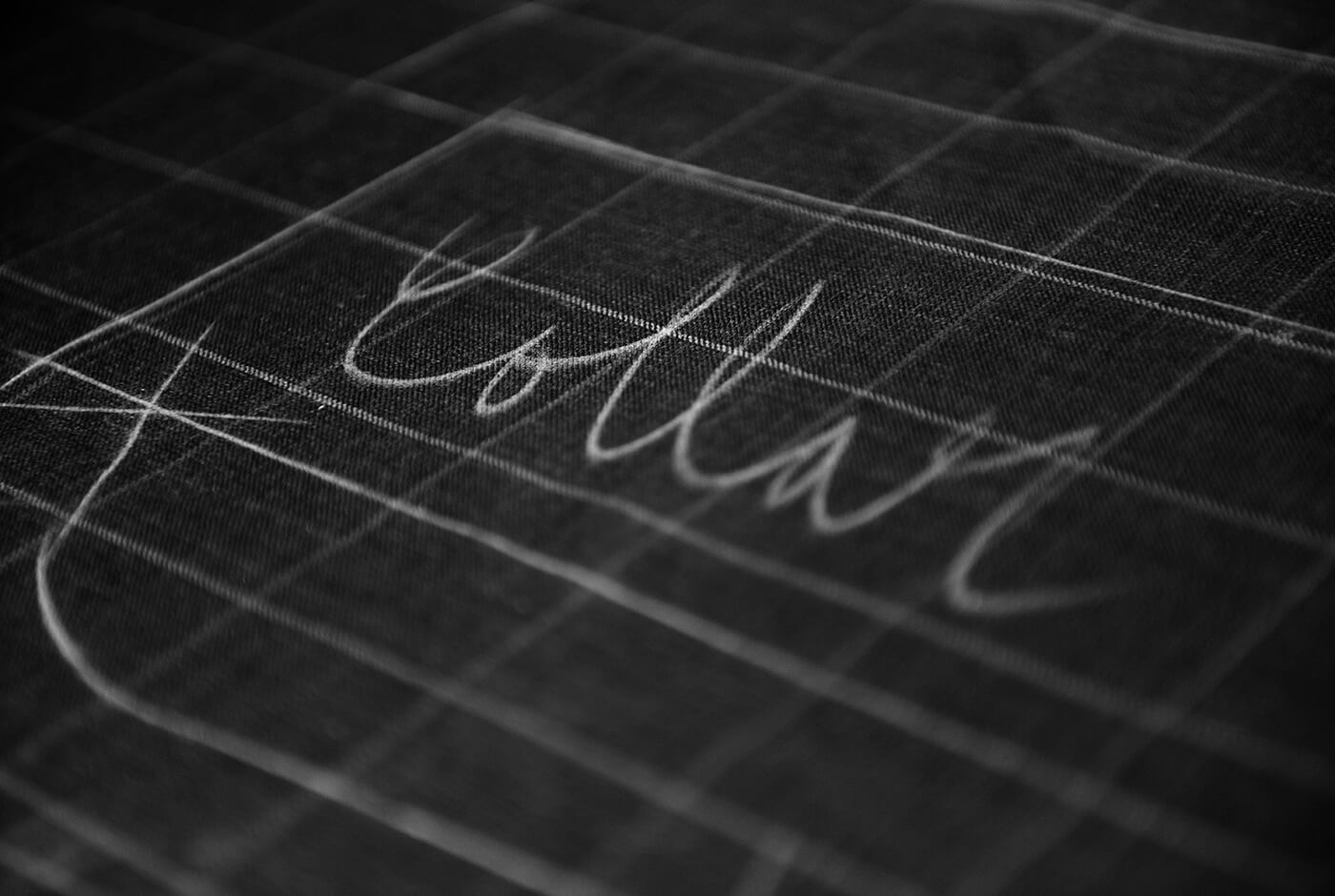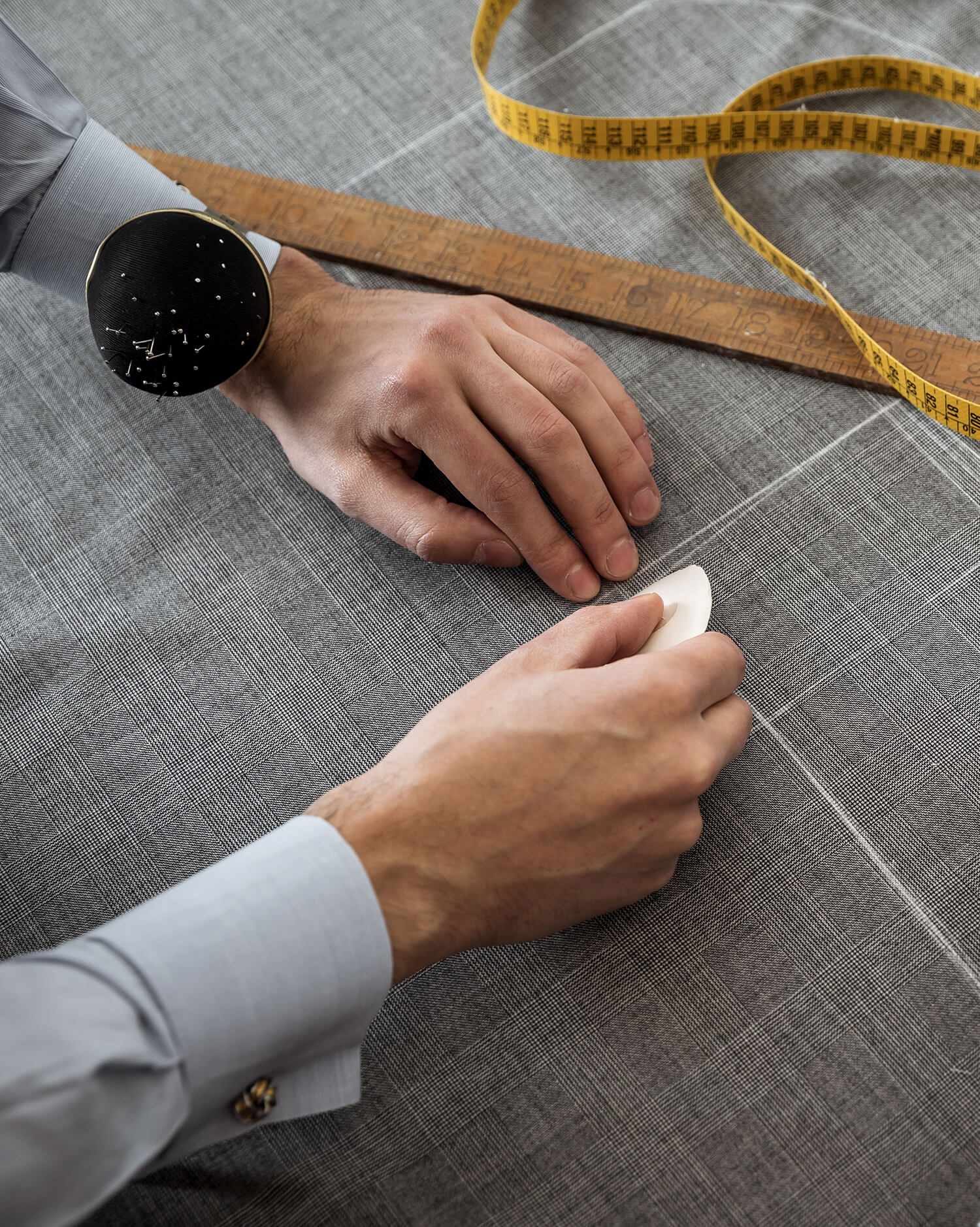Mastering the world of custom-made things can be complex, so we’ve put together this 10-step guide to help you get to grips with the tailoring argot and discover the art of the bespoke suit.
01
BEFORE YOUR FIRST VISIT
Prior to your first appointment with your tailor, there are a number of things you need to think about – such as, what you like and when you will be wearing the suit. Ask yourself: do I prefer a suit with a single- or double-buttoned front? Are you after a three-season (autumn, winter, spring) weight? What about trouser width?
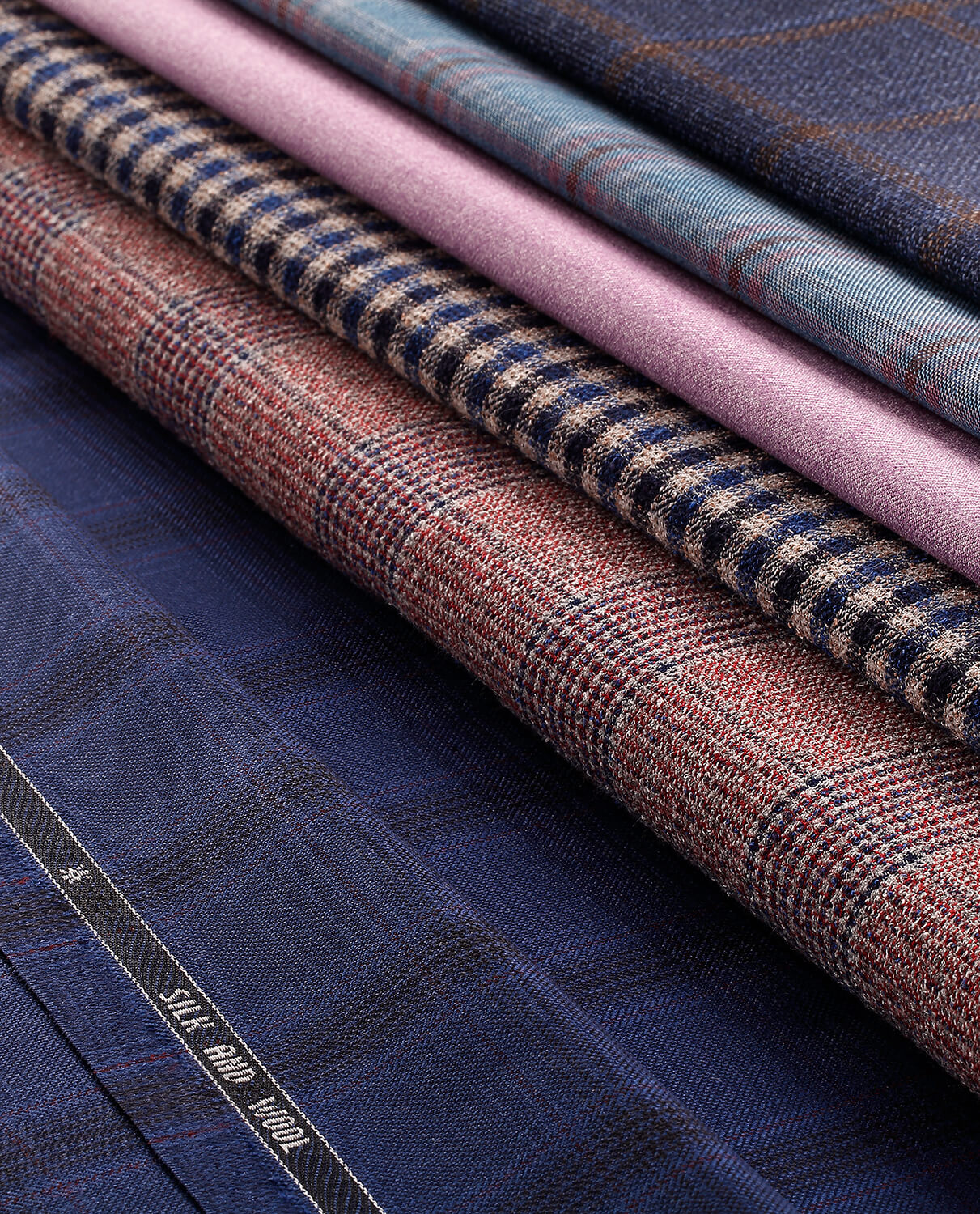
02
PATTERN CUTTING
With years of experience, the tailor will be able to advise you on your requirements and work out what you need. Once you have decided on the garments, the cutters will help you choose the best fabric – each fabric has its own properties, so it’s best to get their expert advice.
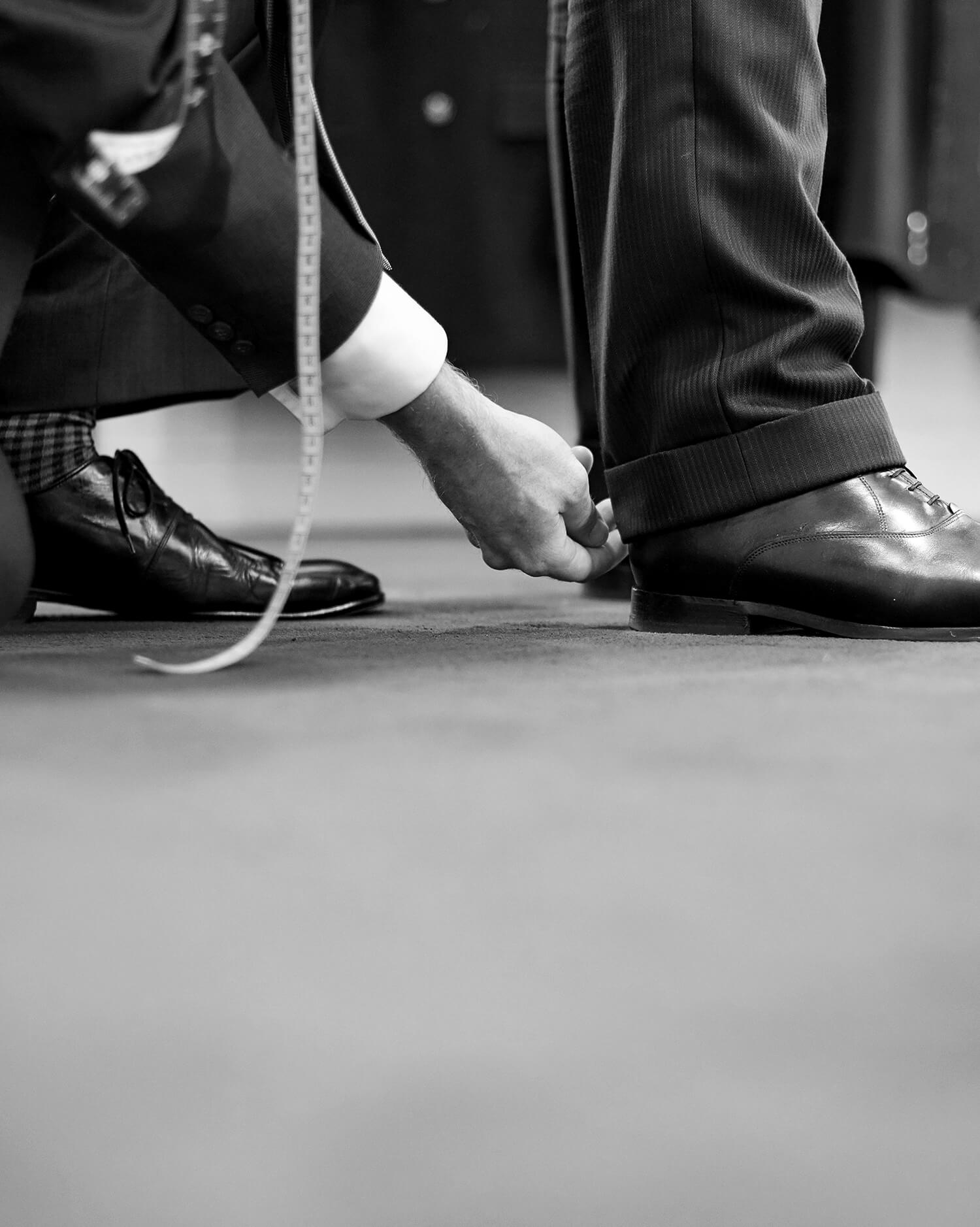
03
CLOTH CUTTING
Once you’ve chosen the cloth and style, the cutter takes your measurements in order to cut your own personal paper pattern, which you’ll keep for life.
04
TRIMMING
The paper pattern is laid out on the cloth and chalked around. The cloth is then cut by hand, leaving extra cloth at certain seams or ‘inlays’, so the suit can be altered at a later date if your weight changes. Material trimmings, like natural wool, canvas and linen, can also be added to the garment’s construction.
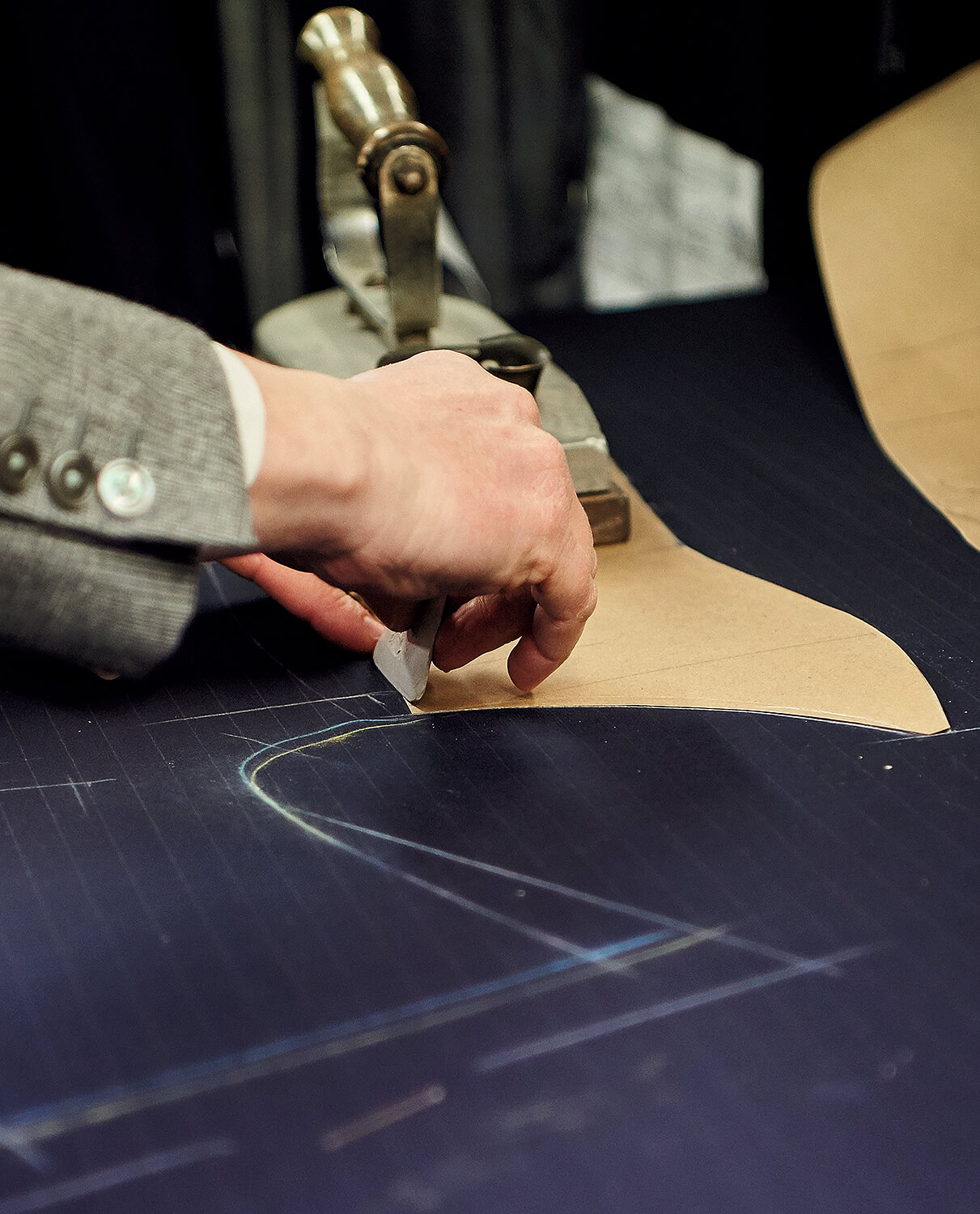
05
PUTTING TOGETHER
The garment is then assigned to a highly skilled tailor – often, that same tailor will be dedicated to you so long as you remain a customer to ensure a continuity of service and consistency of quality.
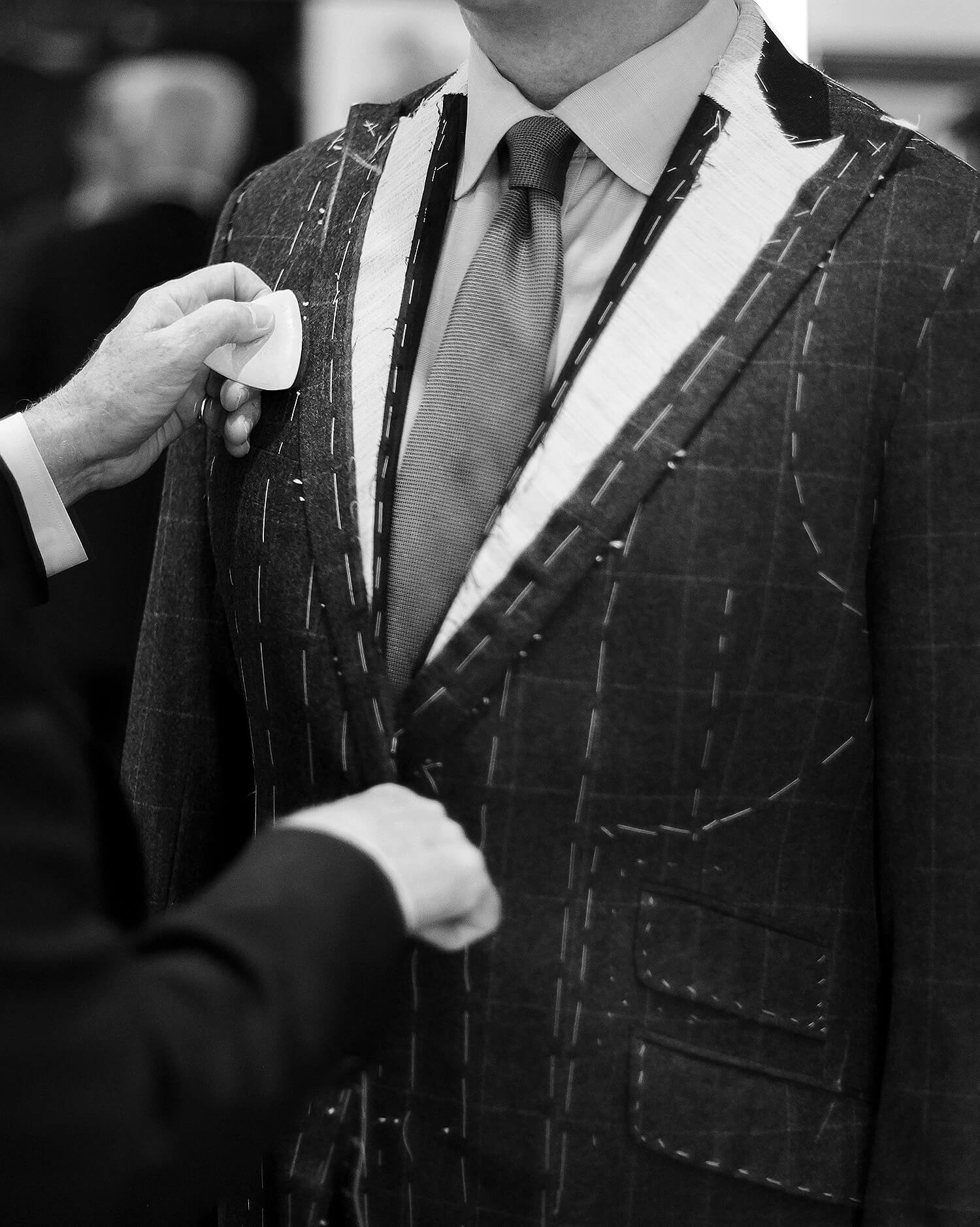
06
FIRST FITTING (OR BASTE)
The tailor canvasses the suit by hand ready for the first fitting. During the fitting, you will find yourself wearing a rough draft of your suit that is only loosely stitched together. This is the time to say whether the jacket feels tight in the shoulders, for instance. The cutter will then alter the suit to fit and enhance your posture.
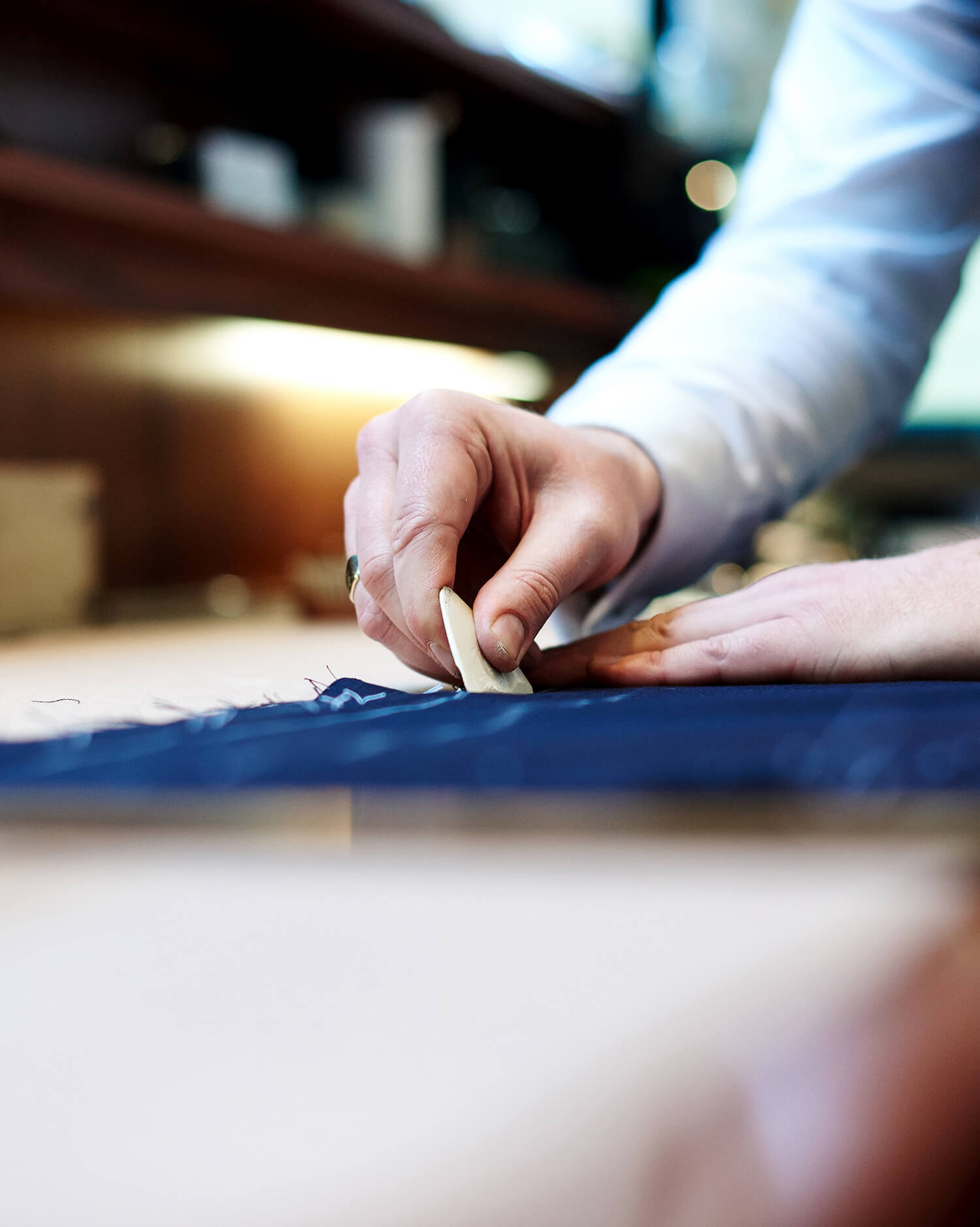
07
MARKING UP
After the first fitting, the garment is marked up with all the readjustments and then completely taken apart and re-cut. The paper pattern is also adjusted at the same time so it can be used again for future orders. The garment is then given back to the tailor to be prepared for your next fitting.
08
SECOND FITTING
The second fitting is more about getting the details – such as trouser and sleeve length – right. The suit is checked over for break over shoe, seat of trouser and drape. Alterations and amendments are refined, giving the suit its fit and comfort. A good tailor should be able to deliver a suit that looks and feels good.
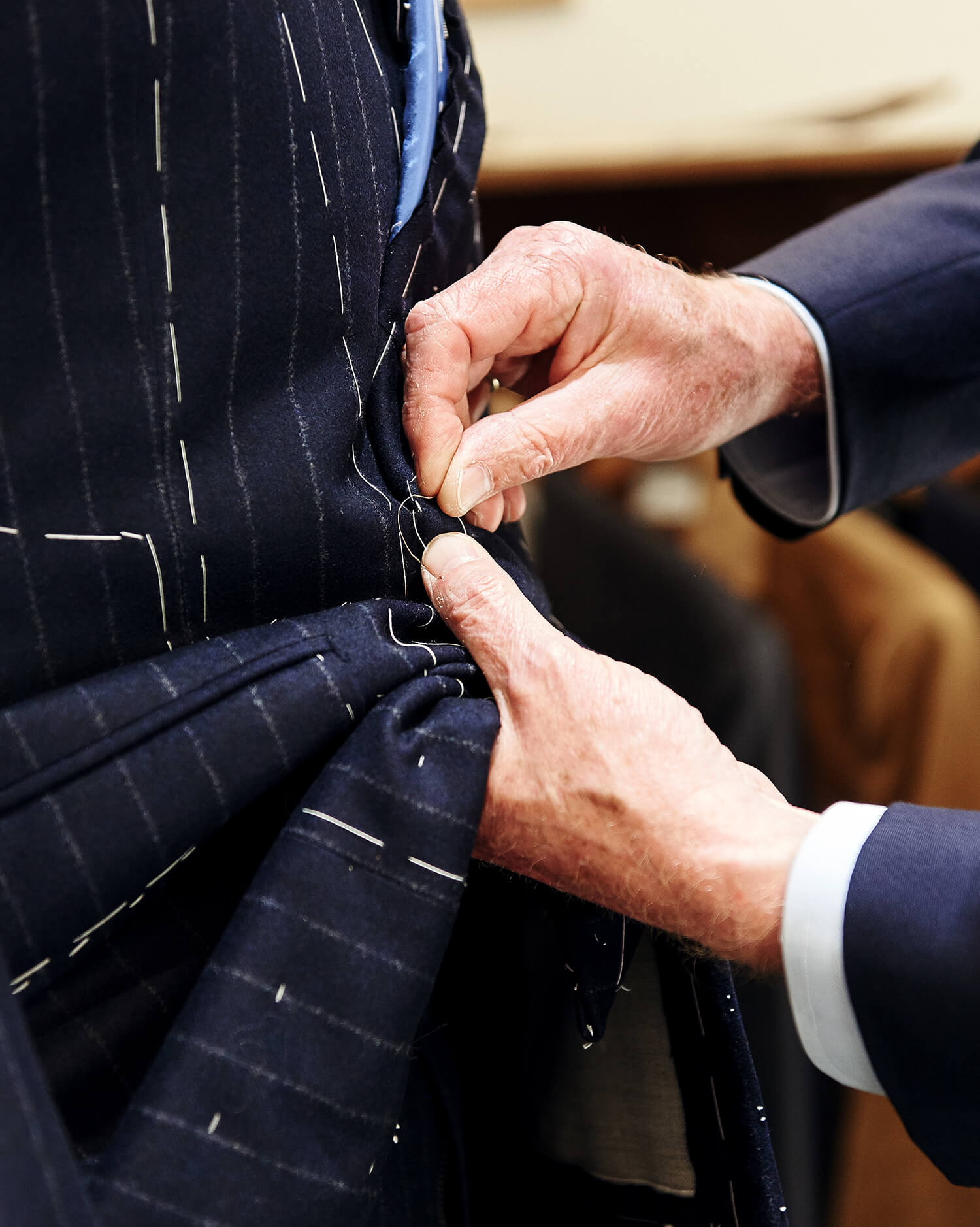
09
BUTTON HOLES
After the final alterations are made, a tailor hand-makes the buttonholes and hand-finishes the suit inside and out. Only the best trimmings and pure natural fibres, such as hand silks, are used, giving the suit its longevity and lasting finish.

10
FINAL PIECE
The garment is then ready for your final fitting. You’ll be given advice on how best to clean, press and care for the suit to maintain its shape. Each suit is numbered and logged so the tailors can easily source any necessary materials to repair even minor damage. This process also means that subsequent orders will require fewer fittings so it will be a much quicker process.
